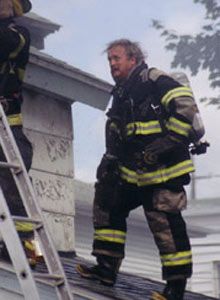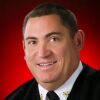FireRescue1’s Year in Review 2008
 Photo courtesy of IAFF Local 60 James Robeson, pictured at a previous incident, was one of the first LODDs in 2008 after being electrocuted at a house fire. |
In 2004, more than 200 fire service professionals met in Tampa, Florida, to discuss ways to reduce firefighter line-of-duty deaths. The result of that meeting is what I have been, and will continue, writing about in my columns for FireRescue1, the 16 Life Safety Initiatives. The goal is to reduce firefighter LODDs by 25 percent by 2009, and 50 percent by 2014. So, how are we doing as we approach the halfway mark?
Before I give you that answer, I want us to ask ourselves another question: Are the numbers the only indicator of success?
As I look back at 2008, I see many signs of us heading in the right direction. The Health and Safety Section of the IAFC and the FDSOA continue to grow by leaps and bounds. Firefighter safety is becoming the prevalent topic of presentations at state and national fire trade conferences, as well fire service news publications and Web sites. The Everyone Goes Home program conducted its own Safety Summit on the campus of the NFA, and has advocate representation in almost every state.
Issues addressed
North Carolina, a state that typically leads the nation in LODDs, is a leader in the nation for the Seat Belt Pledge. Departments all over the country are implementing new policies, procedures and training to address firefighter safety issues. I know there are so many more examples that I haven’t mentioned, but I think you get the picture.
So, in preparation for 2009, let’s answer my first question: How are we doing at the halfway point?
If we go by numbers, I caution you to really examine them carefully. At the time of this submission, we are at 108 LODDs for 2008 as reported on the USFA Web site. But a brief glance of the numbers continues to show that heart attacks and unknown illnesses are the leading factor with apparatus and POV incidents a close second. But keep in mind that many LODDs this year are individuals over the age of 65. We’ve had three individuals die from shootings, and 13 from air tanker and helicopter crashes.
Combat incidents
That leaves roughly 15 individuals — give or take a few depending on your interpretation — as combat incidents. So while the overall number is slightly higher, there are many things to consider that could indicate that we just very well might be improving in some areas.
So as we see some success in firefighter safety, we still have a long way to go. We must identify what things we can fix now? Heart attacks are not an overnight fix. Air disasters are not an overnight fix. Getting shot while trying to help someone is not an overnight fix. Unknown medical illnesses are not an overnight fix.
But situational awareness and risk management on the fireground, wearing seat belts, stopping at intersections and following the basic safety procedures are things we can wrap our arms around to make a difference immediately. Not to say we can’t fix the other stuff, but it’s just going to take time. We cannot continue beating ourselves up over some of this. In fact, we need to celebrate some of the success we’ve had — and work that much harder in 2009.












